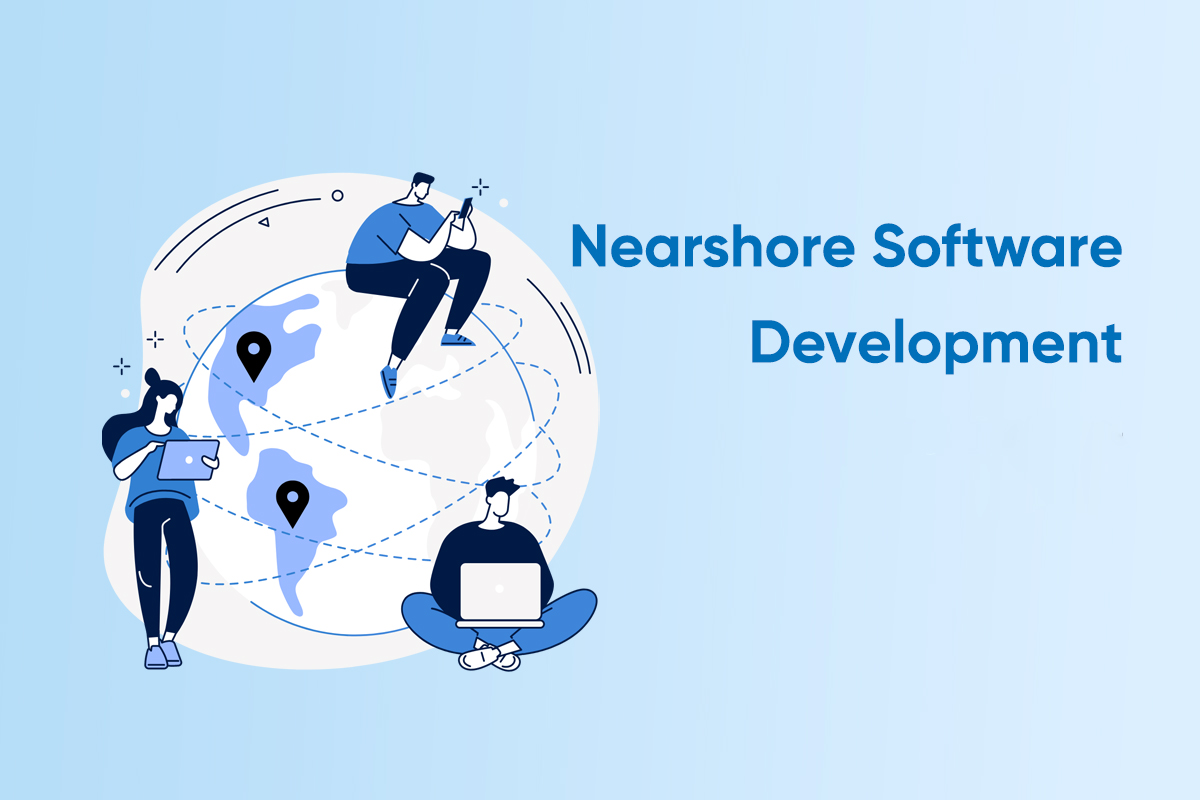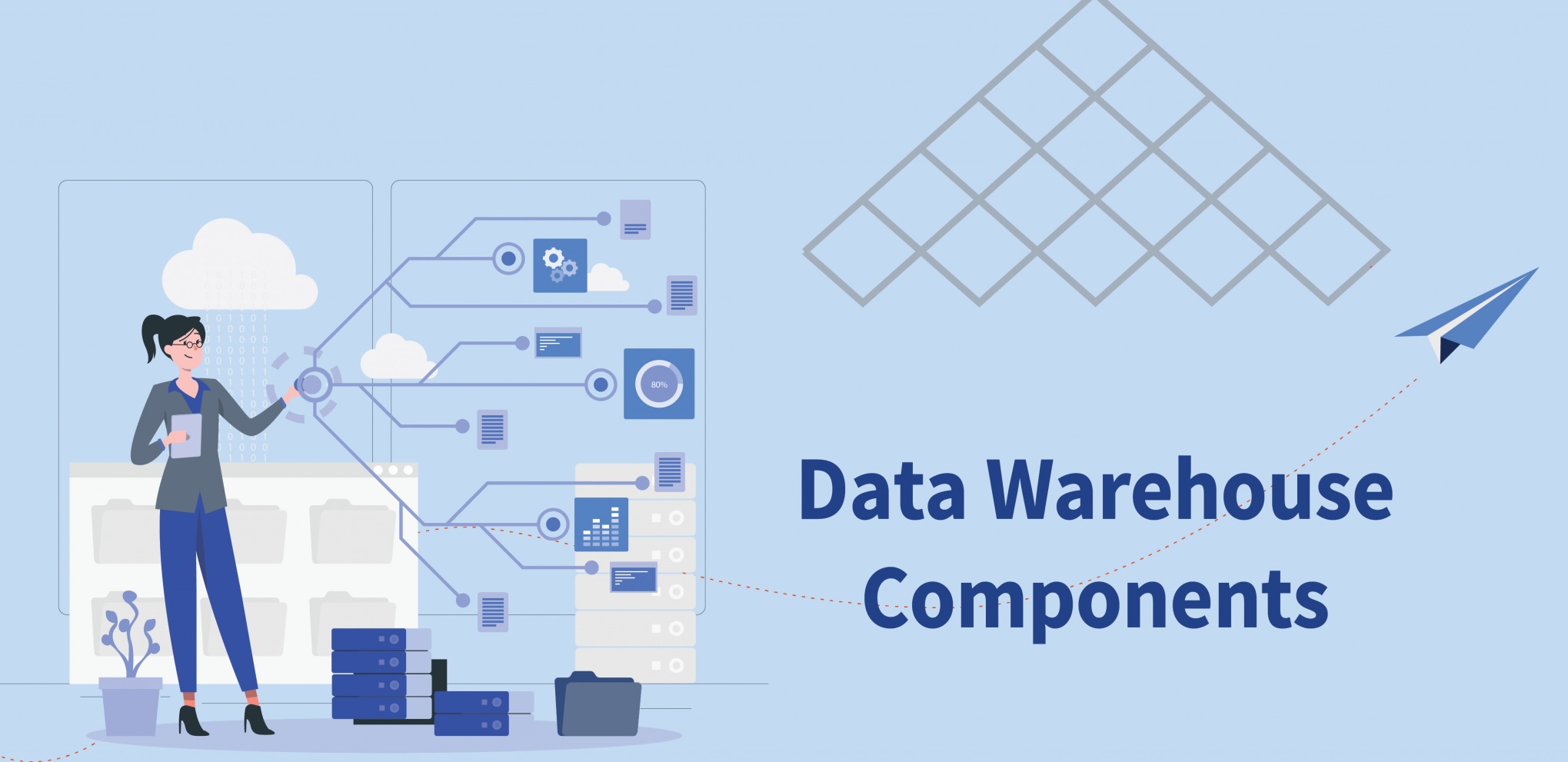Quick decisions in today’s on-the-go business world aren’t just a bonus; they’re are vital. Each choice, big or little, steps you towards either future growth or knowledge gained from lessons learned. Just as our brains use past experiences to shape future decisions, businesses also base decisions on piles of data collected over time from various interactions and operations. This treasure chest of collected experience is crucial for steering future direction and maintaining growth. Yet, businesses run into a certain predicament — they require special tools to handle and make sense of this enormous amount of information. This is where the enterprise data warehouse (EDW) comes in — a vital tool for making data-based decisions. But an EDW does more than just safekeeping records; it turns data into an asset that can offer insights leading to competitive advantage.
In this article, we’ll navigate the intricacies of enterprise data warehouses together. You’ll learn what makes an EDW different from other data storage methods. You’ll look into different EDW types and their essential role in processing data. We aim to showcase how a well-utilized EDW strategy can prove invaluable to your company. We will shed light on varied architectural and conceptual methods used to build a data storage center that can meet and even go beyond your business requirements.
Demystifying the Enterprise Data Warehouse: An Overview
Think of an Enterprise Data Warehouse (EDW) as your business’s memory bank, the ultimate enterprise data warehouse definition. It collects and stores all past data your business has. It takes this information from lots of different places. These can be planning systems (ERP), customer management systems (CRM), or old-fashioned paper records. They all have a home in the EDW. The main idea? Gather everything into one place. This way, anyone in the business can look at the usual data, ask it questions, and interpret it in different ways. The merger of data is important. It can turn plain data into useful pointers that effectively guide decision-making processes.
The Components of an Enterprise Data Warehouse
Let’s break down an EDW system’s structure to define enterprise data warehouse better and understand its crucial components, each serving distinct functions:
- Data Sources: This is where raw data comes from. It can come from something as simple as spreadsheets or as complex as SQL databases or IoT (Internet of Things) systems.
- Ingestion Layer: This part takes data from the sources and puts it in the warehouse. It uses either ETL (Extract, Transform, Load) or ELT (Extract, Load, Transform). ETL cleans the data before it goes into the EDW. ELT does this cleaning right in the warehouse, saving the need for an extra step.
- Staging Area (Optional): With ETL, data first goes to the staging area. Here, it is cleaned, duplicates are removed, and it’s formatted for the warehouse. This area may also have other tools for ensuring the data is top quality.
- Storage Layer: This part of the EDW holds the actual data. Depending on if you use ETL or ELT, the final touches on the data model might happen here. Typically, data warehouses are relational databases with a database management system. They also have extra storage for metadata.
- Metadata Module: Metadata is data about the data. It usually contains where the data came from and the business areas it applies to. This part manages technical and business metadata and may be enhanced by additional layers for more sophisticated metadata handling.
- Data Marts (Optional): Consider EDWs like a big department store. Within this large space, there are smaller, specialized sections. We call them data marts. They cater to specific needs, like marketing or finance. These marts make it easier to find and examine the needed data.
- Presentation Layer: This is the final part, the user interface. It comes with tools to see and analyze data. Users can directly interact with the data. Thanks to this BI interface, they can create reports or utilize machine learning features.
Think of an Enterprise Data Warehouse as a corporate super-brain. It stores and makes information easily accessible, transforming data into valuable insights to push business ahead. All its parts work together smoothly to ensure efficiency. As our technology advances, so will these EDWs, further proving their importance in the IT world.
You might also like
business
business-intelligence
Nearshore software development services vs alternatives
As your business grows, you’re confronted with a pivotal choice: expand your team internally or leverage outsourcing? The goal is clear – to streamline operations and maintain cost-effectiveness. However, the decision between nearshore and offshore outsourcing can be complex. In this article, we will explore several key areas: By concluding this discussion, you will possess […]

Understanding Concepts and Functions of Enterprise Data Warehousing
Enterprise Data Warehousing lives at the intersection of tech and business smarts. It transcends mere storage — it’s an indispensable asset for every organization. It changes pure data into valuable, action-ready insights.
Main Functions and Concepts
- Ultimate Storage Solution: An EDW is like a catch-all storage shed for a company’s data. Every piece of business data that’s been made is kept here. It’s centralized, so it’s easy to get at and manage. This is super important.
- Reflection of Source Data: EDWs are meant to bring together data from different original places — like Google Analytics, CRMs, gadgets connected to the Internet, and more. For example, this capability is vital for healthcare enterprise data warehouse, which must integrate clinical, financial, and operational data to provide a holistic view of patient care and organizational performance.
- Structured Data Storage: Unlike data lakes used for analyzing unformatted data, EDWs are all about keeping standardized, neat and tidy data. This neatness lets users access the data easily, use BI interfaces, and make reports. This creates a better-ordered, user-friendly data place.
- Subject-oriented Data: The goal of EDWs is to zero in on helpful business details. Think of things like sales in different regions or how well certain items sell. This kind of focused attention, mixed with some extra metadata, gives users the who, what, when, where, and why of the information’s source and importance.
- Time-dependency: Data inside an EDW is like a history lesson. It records past events and trends. And because it’s tied to time, organizations can look at patterns across the years. They can see how long certain trends lasted. This is super helpful when plotting out future moves or making big decisions.
- Non-volatility: Once information enters an EDW, it’s there to stay. It can be changed or refreshed if the original source changes. But users don’t toss it out. This makes sure that past data sticks around for future analysis. Some updates may happen from time to time to get rid of out-of-date or not-needed info.
Exploring Variants: Different Types of Enterprise Data Warehouses
An EDW’s design and technical setup can vary significantly based on a business’s specific needs, such as data volume, analytical complexity, security requirements, and budget. Here, we delve into three distinct types of EDWs: on-premises, virtual, and cloud data warehouses, each offering unique benefits and considerations.
On-premises Data Warehouse
Definition: An on-premises data warehouse, including solutions like Oracle Enterprise Data Warehouse, involves storage on local servers and hardware. This setup allows direct integration with data sources through APIs, facilitating real-time data sourcing and transformation.
Benefits:
- Direct control over data is crucial for sensitive sectors like healthcare (enterprise data warehouse healthcare).
- No additional layer of abstraction, simplifying data management and reporting.
Drawbacks:
- High costs for technological infrastructure.
- A dedicated team of data engineers and DevOps specialists is needed for setup and maintenance.
When to Use: Suitable for organizations that prioritize data security and have the resources to invest in infrastructure and personnel. On-premises warehouses are versatile, allowing for scalability and architectural customization while addressing data privacy concerns.
Virtual Data Warehouse
Definition: A virtual data warehouse connects multiple databases virtually, enabling them to be queried as a single system without physically moving the data. This setup relies on analytical tools to pull data from various sources.
Benefits:
- Reduced need for underlying infrastructure management.
- Data remains in its original sources, simplifying access.
Drawbacks:
- Maintenance costs for multiple databases.
- Potential for slow query responses due to data being spread across different databases.
When to Use: Ideal for businesses with standardized data that doesn’t require complex analytics or those not heavily reliant on BI tools. Virtual EDWs offer a starting point for organizations exploring BI capabilities.
Cloud Data Warehouse
Definition: A cloud data warehouse is hosted in the cloud, offering a managed service that optimizes analytics, scalability, and usability. It typically includes computing, storage, and client layers, with infrastructure managed by the cloud provider.
Benefits:
- Scalability and ease of use with managed services.
- No need for physical infrastructure setup and maintenance.
Drawbacks:
Potential concerns over data security and vendor trustworthiness.
When to Use: Cloud data warehouses are a versatile choice for any organization size, especially those looking for a comprehensive, managed solution that includes data integration, maintenance, and BI support without the hassle of managing physical servers.
Different EDWs each have unique pros and considerations. So, it’s essential for businesses to understand their needs and resources before picking the right method.
Comparative Analysis: Data Warehouse, Data Lake, and Data Mart
Understanding data storage types — warehouses, lakes, and marts — is essential. This analysis clarifies these differences and highlights each option’s unique functionalities and use cases.
Data Warehouse
A data warehouse is a large storage center. It holds organized data for easy search and study. The information falls into tables or grids, which makes sense to our brains and software tools. Huge amounts of data fit in a warehouse. It can range from 100GB to nearly unlimited. This data includes all sorts — internal, external, across different areas. Building a warehouse takes months, as it’s complex and needs detailing.
Data Lake
Data lakes, unlike warehouses, are designed to store all types of data – organized, disorganized, and somewhat organized. This feature helps in machine learning and data analytics. Of late, data lakes are also used for BI tasks. Rather than a typical ETL (Extract, Transform, Load) process, raw data is used and altered. But, finding and studying organized data can be tricky. That’s when a data lakehouse comes in. It’s a mix-model solution, balancing the positives of both lakes and warehouses.
Data Mart
Think about data marts this way: they’re specific databases. They keep certain types of data, like marketing or finance related. They’re much smaller than a data warehouse, usually under 100GB, and are easier to use and quick to set up. This setup process can take anywhere from 3 to 6 months. Sometimes, they act alone, but they are often a smaller chunk of a big data warehouse, giving pieces of data for specific analysis. Data marts basically hold structured data, not from too many sources.
Key Differences and Use Cases
- Scalability: Big data warehouses and lakes can manage tons of data throughout a company. Data marts are for specific needs, like one department.
- Data Type and Structure: Data marts and warehouses handle structured data. That helps with basic Business Intelligence (BI) applications. Data lakes are different; they can deal with any data type, working great with a wide variety of analytics like machine learning and data mining.
- Setup and Maintenance: Setting up and taking care of big data lakes and warehouses takes a lot from you, especially if it’s an on-premise system. But, data marts are smaller and more focused. So, getting one up and running and taking care of it later is easier and less resource-intensive.
- Use Case: If you’re dealing with a lot of analysis across many areas, you’ll likely need a data warehouse. For projects needing a deep dive into big data, a data lake fits well. And, if you have specific departments needing fast, relevant data, data marts are a good pick.
So, whether you choose a data warehouse, data lake, or data mart, it all comes down to what you need, how you want to analyze it, and your organization’s scale. These differences matter a lot. Why? Because they help you set up a solid data management and analytics plan.
Technological Foundations: Tools and Technologies in Enterprise Data Warehousing
Business data storage is a big, tricky world. It’s full of different tools and technologies. Their goal? To help any kind of organization with their specific needs. For people who own businesses, it’s challenging to navigate this area without help. They need to seek out experts in storage, ETL (Extract, Transform, Load), and BI (Business Intelligence). These experts can help them find the best tools for their company’s goals. New technologies, like the cloud, have had a significant impact. They’ve shaped how we set up data storage for whole companies, making it easier to scale and more cost-effective.
Cloud Data Warehousing Solutions
There’s a new kind of data storage service. It has made it easy for businesses of all sizes to store and work with lots of data. Let’s look at a few notable ones:
- Amazon Redshift: This is part of Amazon’s huge cloud-computing platform. Amazon Redshift was made specifically for storing and analyzing many business-level data. It can process lots of data all at once, which is perfect for the changing needs of today’s businesses. Even though it’s for everyone, you’ll need some tech-savvy people to get the most out of it – to manage resources and servers. Prices start at a budget-friendly $0.25 per hour, but it can increase based on how much data you store and how many users you have.
- Google BigQuery: BigQuery is a multi-cloud data warehouse. It allows many users to search vast datasets easily. Being serverless, it lessens the workload because Google manages the main infrastructure. It’s fast, can grow with you, and its cost can be flat-rate or based on how much you use.
- Snowflake: This enterprise data warehouse software is serverless and built on AWS technology. There is no need to worry about hardware; it’s all online. This software service makes storing and analyzing data easy. Its flexible and effective features manage data well. Users can choose their setup based on the number and size of their compute clusters. Costs are easy to find on Snowflake’s website.
Picking the right tech for company data storage is essential. It should be based on what the firm’s data needs are, what’s already in place, and what the aims are for the future. Cloud storage options like Amazon Redshift, Google BigQuery, and Snowflake are strong, able to grow, and won’t break the bank. These are good for companies wanting to use data to gain an edge.
Talk to experts and potential users in your company. This makes sure the choice fits technical and business needs. Doing this sets up solid, informed decisions with plans for company growth.






